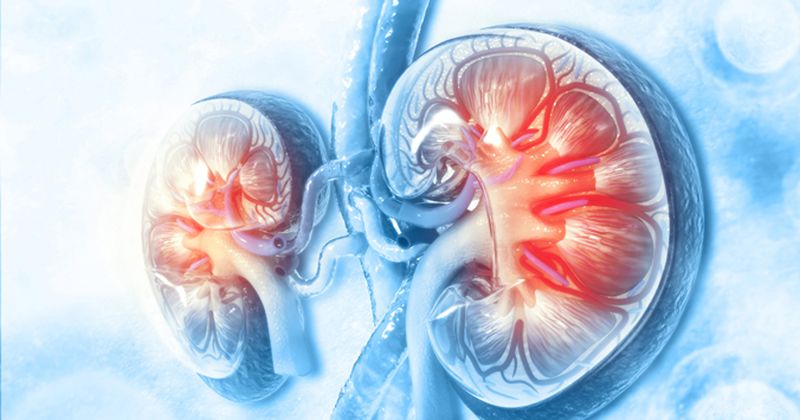Albuminuria screening essential to guide therapy decisions in diabetic kidney disease
PHILADELPHIA — Chronic kidney disease assessment and monitoring by albuminuria and estimated glomerular filtration rate is necessary for delivering goal-directed therapies to people with diabetes, according to a speaker.
The recent American Diabetes Association and Kidney Disease: Improving Global Outcomes (KDIGO) consensus report shows alignment on current recommendations for evidence-based management of diabetes and CKD, Katherine R. Tuttle, MD, FASN, FACP, FNKF, professor of medicine and co-principal investigator at the Institute of Translational Health Sciences at the University of Washington and executive director for research at Providence Health Care, said during a presentation at the Heart in Diabetes CME conference. Among those aligned recommendations, SGLT2 inhibitors, GLP-1 receptor agonists and a nonsteroidal mineralocorticoid antagonist, along with conventional angiotensin-converting enzyme inhibitors or angiotensin receptor blockers, are recommended therapies for people with diabetes and CKD.

“We must move expeditiously from evidence to implementation of the breakthrough therapies that are poised to save lives, kidneys and hearts in patients with diabetes and CKD,” Tuttle told Healio. “This is a critical unmet need in clinical care.”
Harmonizing guidance
With several new agents targeting a variety of mechanistic approaches to improving outcomes for people with diabetes and kidney disease, KDIGO published its first
guideline for diabetes management in CKD in 2020. However, in just less than 2 years, the
development of additional treatments and the continued publication of high-quality trials in patients with diabetes and CKD warranted a review of the 2020 document.

“This is really important in terms of implementation, to harmonize guidelines so we are giving the same recommendations across different groups and can reach more people that way,” Tuttle said during her presentation.
Diabetes is not the biggest cause of CKD and kidney failure worldwide, yet the diabetes burden is likely underestimated.
“We know, for example, with the U.S. Renal Data System registry, that people on dialysis without transplant have a diabetes prevalence of 66% to 86% based on age and race,” Tuttle said. “This is proportionately more diabetes patients in the nephrology clinic than in the endocrine clinic. Take that in for a moment. It is our problem.”
Most of the excess CVD risk in this population is seen in people who have albuminuria or low GFR or both, Tuttle said.
Tuttle highlighted that albuminuria screening, as recommend by clinical practice guidelines, is only accomplished in 10% to 40% of patients with diabetes; a lack of awareness and detection is a major factor in underutilization of CKD therapies.
“This is critically important, because if we do not recognize risk, then we are not addressing risk,” Tuttle said.
Similarly, medication use in CKD stages 3 to 5 remains underused. In a recent analysis of the CURE-CKD registry published in JAMA Network Open, Tuttle and colleagues found that, despite common occurrence of CKD, rates of identification and use of kidney protective agents were low, whereas use of potential nephrotoxins was widespread. Albuminuria or proteinuria was tested in approximately one-eighth of adults with CKD, renin-angiotensin system inhibitors were prescribed to one-fifth, and nonsteroidal anti-inflammatory agents or proton pump inhibitors were prescribed to more than one-third.
“We are giving more proton pump inhibitors and nonsteroidals ... so we are more likely to do harmful things and less likely to apply effective therapies,” Tuttle said. “This has been reproduced in other datasets also.”
New first-line recommendations
For a more holistic approach for improving outcomes in people with diabetes and CKD, Tuttle said the new consensus statement calls for SGLT2 inhibitors as a first-line therapy in type 2 diabetes with CKD in addition to moderate-intensity statin therapy and a renin-angiotensin-aldosterone system inhibitor, plus a GLP-1 receptor agonist, if needed, to achieve an individualized glycemic target or if there is persistent albuminuria, and other glucose-lowering agents if needed.
“Metformin is no longer recommended unless necessary as a first-line therapy,” Tuttle said. “A person with high kidney and CV risk could simply start with an SGLT2 inhibitor. If they have residual albuminuria, you may choose to start a nonsteroidal [mineralocorticoid receptor antagonist] like finerenone (Kerendia, Bayer).”
The updated KIDGO “heat map,” which classifies CKD based on eGFR and albuminuria categories with a color-coded chart, identifies risks and actions, such as treatments and when to refer patients.
“There are things nephrologists can do, there are drugs we are using, like finerenone,” Tuttle said. “This is really about co-management though. This is a team sport to identify patients at high risk and intervene when we can make a difference.”
References:
- KDIGO 2022 Clinical Practice Guideline for Diabetes Management in Chronic Kidney Disease. Available at: kdigo.org/wp-content/uploads/2022/03/KDIGO-2022-Diabetes-Management-GL_Public-Review-draft_1Mar2022.pdf. Accessed June 27, 2022.
- Tuttle KR, et al. JAMA Netw Open. 2019;doi:10.1001/jamanetworkopen.2019.18169.







